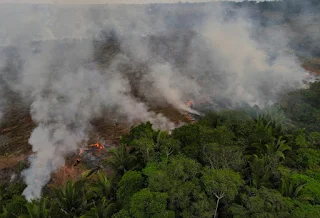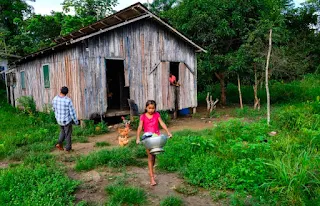Amazon Rainforest and it's significants
Introduction
The Amazon rainforest is one of the most biodiverse places on Earth. It's home to countless plant and animal species, many of which are found nowhere else on the planet. The Amazon is also an important part of the global climate system. It helps regulate atmospheric temperature and precipitation, and it plays a crucial role in the water cycle. deforestation of the Amazon rainforest has a profound impact on both the local ecosystem and the global climate. When trees are cut down and burned, they release carbon dioxide into the atmosphere, contributing to climate change. Deforestation also undermines the forest's ability to regulate atmospheric temperature and precipitation. You can help protect the Amazon rainforest by supporting organizations that are working to conserve it, such as the World Wildlife Fund or Greenpeace. You can also reduce your own consumption of products that contribute to deforestation, such as beef, soybeans, palm oil, and wood.
The Amazon rainforest is the world’s largest tropical forest
The Amazon rainforest is the world’s largest tropical forest. It covers an area of about 5,500,000 square kilometers (2,100,000 square miles). The Amazon basin covers most of Brazil and parts of Peru, Colombia, Venezuela, Ecuador, Bolivia, Guyana, Suriname and French Guiana.
The Amazon rainforest has a rich variety of plants and animals. It is home to more than 2.5 million different species of animals and plants. About one third of all species in the world live in the Amazon rainforest.
 |
| screengrab |
The Amazon rainforest is important for many reasons. It produces a large amount of oxygen and helps to regulate the Earth’s climate. The Amazon rainforest also helps to protect against soil erosion and provides homes for many animals and plants.
It is home to an extraordinary amount of plant and animal life
The Amazon rainforest is home to an extraordinary amount of plant and animal life. It is estimated that there are tens of thousands of different plant species and millions of different animal species living in the rainforest. The Amazon rainforest is also one of the most important ecosystems on Earth, providing a vital role in regulating the global climate.
 |
| screengrab |
The Amazon rainforest plays a vital role in global climate change
The Amazon rainforest plays a vital role in global climate change by providing a significant amount of the world’s atmospheric oxygen and by serving as a sink for carbon dioxide. The Amazon forest accounts for more than half of the world’s remaining rainforests and is often referred to as “the lungs of the planet.”
The Amazon rainforest produces 20% of the world’s oxygen, making it an important player in global climate change. The trees of the Amazon absorb carbon dioxide from the atmosphere and release oxygen back into it. This process helps to regulate the Earth’s climate and minimize the effects of greenhouse gases.
 |
| screengrab |
In addition to producing oxygen, the Amazon rainforest also acts as a sink for carbon dioxide. Carbon dioxide is a greenhouse gas that contributes to global warming. When carbon dioxide is removed from the atmosphere, it helps to reduce the greenhouse effect and slow down climate change.
The Amazon rainforest is under threat
The Amazon rainforest is the world’s largest tropical forest, spanning over five million square kilometers across Brazil, Bolivia, Colombia, Ecuador, French Guiana, Guyana, Peru, Suriname and Venezuela. It is home to an estimated 390 billion individual trees and houses 10% of the world’s known biodiversity. The Amazon basin covers 40% of South America and contains 20% of the world’s freshwater.
 |
| Screengrab |
The Amazon rainforest has been called the “lungs of the planet” because it produces 20% of the oxygen in the Earth’s atmosphere. It also plays a vital role in regulating global climate change by absorbing carbon dioxide from the atmosphere.
However, the Amazon rainforest is under threat from human activity. Deforestation is occurring at an alarming rate, with an estimated 17% of the forest being lost since 1970. This is largely due to clearance for cattle ranching and soybean production, as well as logging and infrastructure development. If this trend continues, it is estimated that 40% of the Amazon could be deforested by 2030.
 |
| Screengrab |
This would have devastating consequences for both the local environment and global climate change. The loss of trees would lead to increased greenhouse gas emissions and further contribute to climate change. Additionally, it would destroy habitat and lead to extinction for many plant and animal species that call the Amazon rainforest home.
It is therefore essential that action is taken to protect the Amazon rain
The Amazon rainforest is one of the most important ecosystems on Earth. It is home to an incredible diversity of plant and animal life, and its rivers play a vital role in the global water cycle. The rainforest also plays a key role in regulating the Earth's climate, making it a crucial part of our planet's future.





0 Comments